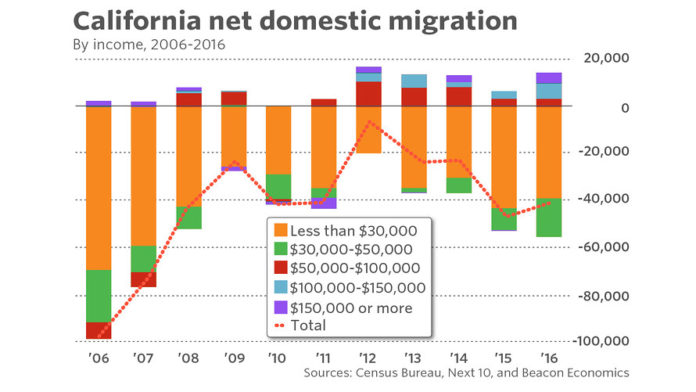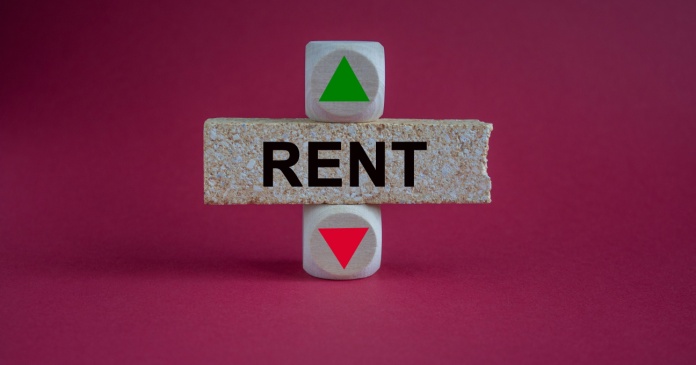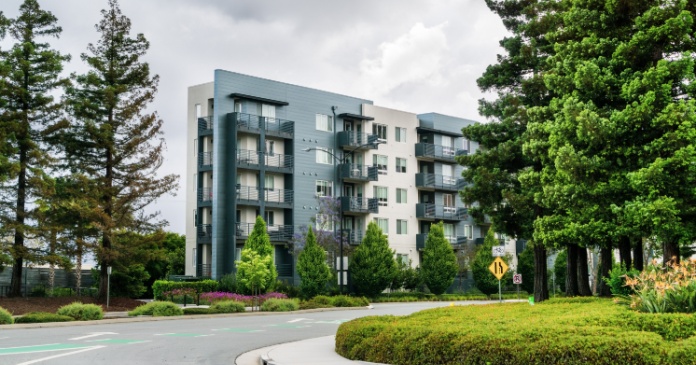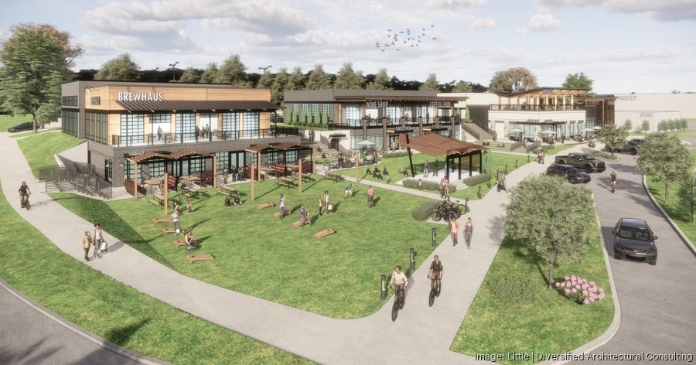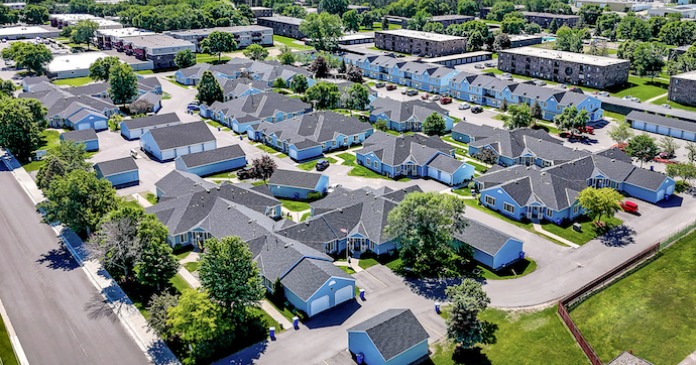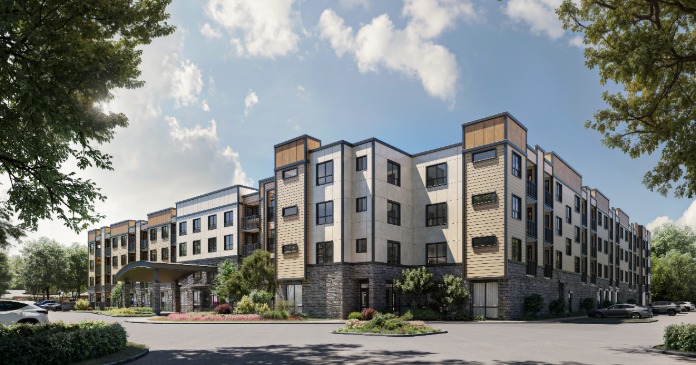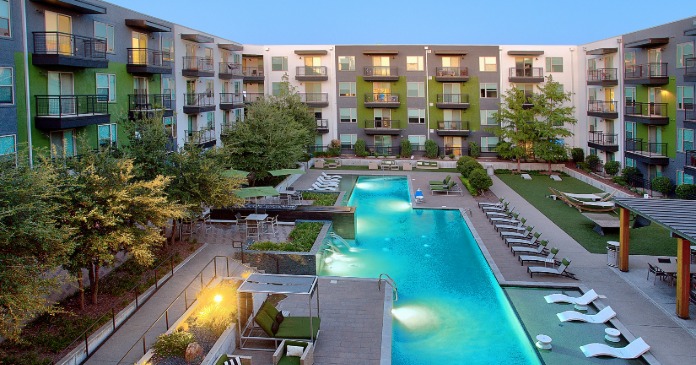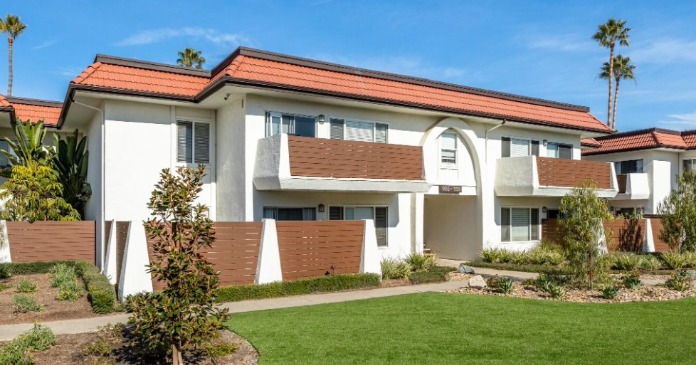California’s state constitution, culture and oh-so much more, empowers the state’s bleeding edge progress—and high degree of volatility. Certainly the Golden State’s penchant for both experimentation and social turmoil feeds the carefully crafted aphorism: “as California goes, so does the nation.” However, sometimes the grand experiment fails.
Case in point. A California exodus has resulted in a loss of a million people and the state could easily lose a million more. The real news is who is fleeing the Golden State and what this means for its future operation and economy.
A new study suggests that like the fault line beneath California’s surface, the division between its economic classes, is only deepening. The report, Growth Amid Dysfunction: California Migration, Current State of California Housing Market, and California Employment by Income—was commissioned by the nonprofit, nonpartisan organization Next 10 and prepared by Beacon Economics. It includes data through Q2 2017, and suggests a state economy that is strong, yet troubled.
“A strong economy can also be dysfunctional,” states the report. It finds that housing is a significant driver of the California exodus since lower wage earners can not keep pace with the highest housing costs in the nation and have no other choice but to move. This leads to an exodus of talent that the state may need to succeed in the next decade.
Meanwhile, the state continues to attract more highly-educated high-earners who can afford pricey homes.
Highlights from the state of California
Analysts forecast that California will be 3 million homes short by 2025. This is actually more optimistic than other recent estimates.
Other data points in the report:
California has the highest home prices of any state. In 2016, the median California home price was $266,750 greater than the median home price in the U.S. as a whole.
Post-recession housing construction has been slow. From 2008 to 2017, an average of 73,000 new housing permits were issued per year—far lower than the average of 135,000 permits issued annually between 1991 and 2007. California has the nation’s second-lowest rate of homeownership and the worst rate of rental housing over-crowdedness in the country.
Housing costs for homeowners with mortgages are the second-worst in the nation, and housing costs for renters are the third-worst.
California homeowners spend more on housing than homeowners in any other state except New Jersey. For homeowners in California, the share of income spent on housing was 21.9 percent in 2016, down from 22.5 percent in 2014.
For renters, housing costs have decreased from 33.6 percent of income in 2014 to 32.8 percent of income in 2016. California ranks 48th of 50 states for this metric.
From 2007 to 2017, only 24.7 housing permits were filed for every 100 new California residents. The U.S. average is 43.1 permits per 100 new residents. California is permitting roughly the same number of housing units as Florida, despite having approximately 18 million more residents.
The housing stock gap is actually being helped by the number of residents leaving the state, and the housing shortage would be even worse if there was no California exodus.
Most jurisdictions are far behind the housing goals set by the 5th cycle of California’s Regional Housing Needs Assessment. Agricultural areas, including the Central Valley and Imperial County, are particularly far behind.


